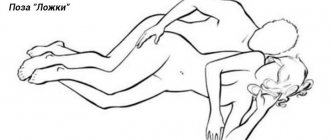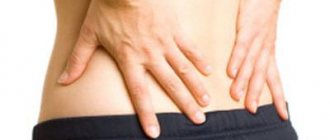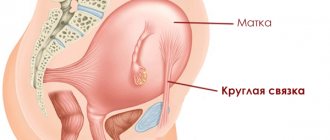During pregnancy, a woman has to change her lifestyle and take better care of her own health. Expectant mothers pay much attention to proper nutrition, avoiding alcoholic beverages, smoking, and even wearing heels. But many people still have the habit of carrying full bags of groceries from the supermarket, moving furniture while cleaning, and picking up their firstborn in their arms for faster movement. However, lifting weights during pregnancy is highly discouraged; this can lead to miscarriage and other complications.
Of course, much is determined by the woman’s health and the characteristics of the process of bearing a child. But it's still not worth the risk. In situations that require heavy lifting, you need to seek help from others.
Is it possible to lift weights during pregnancy?
There is no clear answer to this question. There are women who lift weights throughout their entire pregnancy and ultimately give birth to healthy and strong babies on time. But, as a rule, this happens in cases where the body is accustomed to such stress.
If the expectant mother has been involved in weightlifting (powerlifting, bodybuilding, etc.) for several years and regularly performs exercises on weight machines and with free weights, then with the onset of pregnancy the risk of harming herself or the child will not be great.
The same applies to women living in rural areas and accustomed to certain physical activities: carrying full buckets, armfuls of firewood. However, it cannot be said that lifting weights is guaranteed not to harm these categories of pregnant women.
Lifting something heavy during pregnancy is not recommended for two reasons: it can cause a miscarriage and/or harm the health of the expectant mother. Her body is already experiencing severe overload, because the growing fetus and weight gain themselves become “heaviness”.
Therefore, all matters of this nature need to be postponed, delegated to others (husband, relatives) or canceled altogether. Remember: there is nothing more important than carrying your baby and maintaining your health.
What happens in the body when lifting weights
Lifting weights affects the condition of almost the entire body. During pregnancy it is dangerous for three reasons:
- Displacement of vertebral discs . Women's bones are more fragile and thinner than men's. This feature becomes more noticeable during pregnancy, when some of the calcium reaches the growing fetus. The spine experiences the greatest load during heavy lifting. Gradually, his discs begin to shift, and there is a risk of a hernia. When carrying a child, it is higher, since the load increases every month and reaches its maximum by childbirth. The condition is accompanied by severe back pain and limited mobility (turning, bending).
- Varicose veins and other vascular disorders. Changes in the body of a pregnant woman lead to a decrease in the tone of the veins. This is partly due to hormonal changes, partly due to the growing fetus. Most of all, circulatory disorders are expressed in the lower part of the body - in the legs. Systematic lifting of weights leads to impaired blood flow, which increases the risk of developing varicose veins and deteriorates the supply of oxygen and nutrients to the brain, heart, and uterus.
- Premature birth or miscarriage. Lifting weights is accompanied by tension in the abdominal muscles and an increase in intra-abdominal pressure. This leads to contraction of the uterus and expulsion of the fetus. The risk of such complications is especially high in women with hypertension. Read more about uterine hypertonicity during pregnancy →
How does a miscarriage occur?
The process of termination of pregnancy develops gradually, over several hours or even days. If a woman seeks medical help in a timely manner, she can still be helped. How does a miscarriage occur? In its development, spontaneous abortion goes through several stages.
- Risk of miscarriage. The woman experiences slight bleeding and complaints of nagging pain in the lower back and suprapubic region. On examination, uterine hypertonicity is revealed. Even slight bleeding is a dangerous sign that requires immediate medical attention. At this stage, it is still possible to stop spontaneous abortion.
- The beginning of a miscarriage is manifested by similar symptoms, which gradually increase and become more pronounced. Fragmentary detachment of the fertilized egg begins, and partial opening of the cervical canal occurs. But even at this stage, the woman can still be helped by emergency hospitalization in a hospital.
- A miscarriage is in progress - cramping pain occurs in the lower abdomen, the embryo is completely separated from the endometrium, but still remains in the uterine cavity. Heavy bleeding begins, which indicates the final death of the embryo. The external and internal os of the uterus open, and during examination, elements of the fertilized egg are determined in the lumen of the cervix or vagina.
- Incomplete abortion. This condition is characterized by painful sensations in the lower abdomen, lower back, and heavy bleeding. Elements of the fertilized egg remain in the uterine cavity. Large blood loss is accompanied by dizziness, weakness, drop in blood pressure, and fainting.
- A complete spontaneous abortion is said to occur after all parts of the embryo are completely released. After the uterus is cleansed, it contracts and returns to its previous shape and size. All accompanying symptoms (pain, bleeding) disappear, the woman does not need further therapy, but remains under medical supervision.
But it is not always that fragments of the fertilized egg completely come out of the uterus. In this case, the woman will have to undergo a curettage procedure, otherwise the remains of the embryo will begin to decompose in the uterine cavity and become a source of infection. The spread of pathogenic microorganisms threatens with dangerous complications and severe inflammatory processes. In this case, surgery is necessary, otherwise there is a direct threat to the woman’s health and life.
How to lift weights correctly?
If you still have to lift weights during pregnancy, you need to do it correctly:
- when bending over, bend your knees, keep your body straight with a slight arch in the lower back;
- lift heavy things using a good grip with your hand and straightening your knees, without jerking, straighten your body slowly;
- feet should be placed at a comfortable width, fully resting on the floor, and comfortable shoes should be worn;
- if possible, the load should be evenly distributed in both hands, this will keep the spine straight;
- When carrying heavy objects, keep your body as straight as possible, do not twist or bend;
- wear a bandage that allows you to distribute the load correctly over the entire body; more about wearing a bandage during pregnancy→
How much weight can pregnant women lift?
Pregnant women can lift objects weighing up to 3 kg. For athletes and women accustomed to physical labor, this figure can be increased to 5-6 kg.
It follows from this that it is impossible to carry even a one-year-old child in this position. After all, in addition to the fact that his average weight is 8-10 kg, the baby is also very active, he can accidentally kick his mother in the stomach or put pressure on him while getting down from his arms.
It is important to remember that your own weight and a growing fetus are also burdens that a woman carries every day. Therefore, the longer the pregnancy, the less weight you can lift.
How to correctly calculate the weight allowed for lifting
Regardless of the height of the expectant mother, lifting a load of no more than 3 kg during pregnancy is allowed.
In 9 months, thin women with a height of up to 160 cm can gain about 15 kg during the entire pregnancy. Pregnant women of tall height and average build should gain from 6 to 12 kg. As you can see, during the entire pregnancy a woman can gain quite a lot of kilograms, which is an additional burden on the body, in particular on the spine, legs and internal organs.
Carrying 6 to 15 kg that is not your own weight is very difficult, so do not overwork yourself and do not lift heavy objects. Always remember what consequences this entails.
Consequences
The most serious consequence of lifting weights during pregnancy is its termination. The 1st and 3rd trimesters are especially dangerous in this regard. In the early stages, uterine hypertonicity often develops and the risk of miscarriage is present even at rest; lifting weights significantly increases it.
In the later stages, the body gradually begins to prepare for the upcoming birth, the uterus descends and physical activity can provoke the premature birth of the child. Therefore, before the 12th and from the 22nd week you need to be especially careful.
If you lift weights during pregnancy, the likelihood of diseases such as varicose veins, thrombophlebitis, heart failure, and vertebral displacement increases. Problems with blood supply to internal organs affect the condition of the fetus: lack of oxygen leads to hypoxia (oxygen starvation) and intrauterine growth retardation.
Lifting something heavy during pregnancy is highly discouraged. Permitted safe weight – 3 kg . If it is exceeded, there is a risk of miscarriage, premature birth, development of varicose veins and displacement of spinal discs. At risk are women with hypertonicity and uterine prolapse, as well as poorly developed muscles.
It is most dangerous to lift heavy objects in the 1st and 3rd trimesters of pregnancy. If after exercise there is pain in the lower abdomen or bleeding, you must urgently call an ambulance.
Author: Olga Khanova, doctor, especially for Mama66.ru
Why shouldn't pregnant women wear weights?
Pregnancy itself is already stress and burden on the female body. If you lift something heavy during this difficult period, then future births can:
- occur with complications: displacement of the vertebrae, varicose veins, etc.
- start prematurely;
- end in surgical intervention due to fetal death.
What happens in the mother's body?
As soon as the fertilized egg attaches to the wall of the uterus, all organs and systems begin to prepare for pregnancy and future childbirth. The female body rearranges its work:
- Pregnancy hormones begin to be actively produced.
- The cardiovascular system increases blood volume by 45% to form fetal circulation.
- Blood pressure decreases, because the walls of blood vessels dilate. This is necessary for more fruitful blood circulation and better enrichment of it with oxygen. After the 12th week, the pressure will return to normal.
- The tone of the intestines decreases. Only a antenatal clinic doctor can help you choose the right laxatives.
Attention! If the pressure remains high after the 12th week of pregnancy, this indicates a developing pathology. Urgent consultation with a doctor is needed.
What happens in the child's body
Doctors divide pregnancy into 3 trimesters. It looks like this:
- Weeks 1-13 refer to the 1st trimester;
- 14-27 weeks are the second;
- from the 28th week until the birth of the child - the third.
During the first trimester, the embryo is conceived and formed.
At the second stage, it has formed and looks like a little man who began to move and suck his thumb. The third trimester is the most important for two lives. All organs and systems of the baby go through the final stages of their growth and development. The fetus is preparing for life outside the mother's womb.
Consequences in the first, second and third trimesters
Each period of pregnancy is marked by new conditions for a woman. Then, after the baby is born, everything will return to normal. While carrying a child, you need positive emotions, a balanced and healthy diet, and rest.
In each period, the expectant mother will experience:
- During the first stage - toxicosis: nausea, vomiting, heartburn, low blood pressure. Pregnancy may be threatened by: miscarriage, incorrect (low) location of the placenta.
- Next will come a relatively calm period of time. Psychologically and physically, the woman will get used to her condition. Unpleasant consequences can include anemia and hemorrhoids.
- Mom may face complications: constipation, varicose veins. At the last stage, a miscarriage threatens the health of the mother and the life of the child. Modern medicine is able to deliver a premature baby; there are special perinatal centers.
Peculiarity! Slight shortness of breath and mild swelling of the legs during the second trimester are considered normal.










